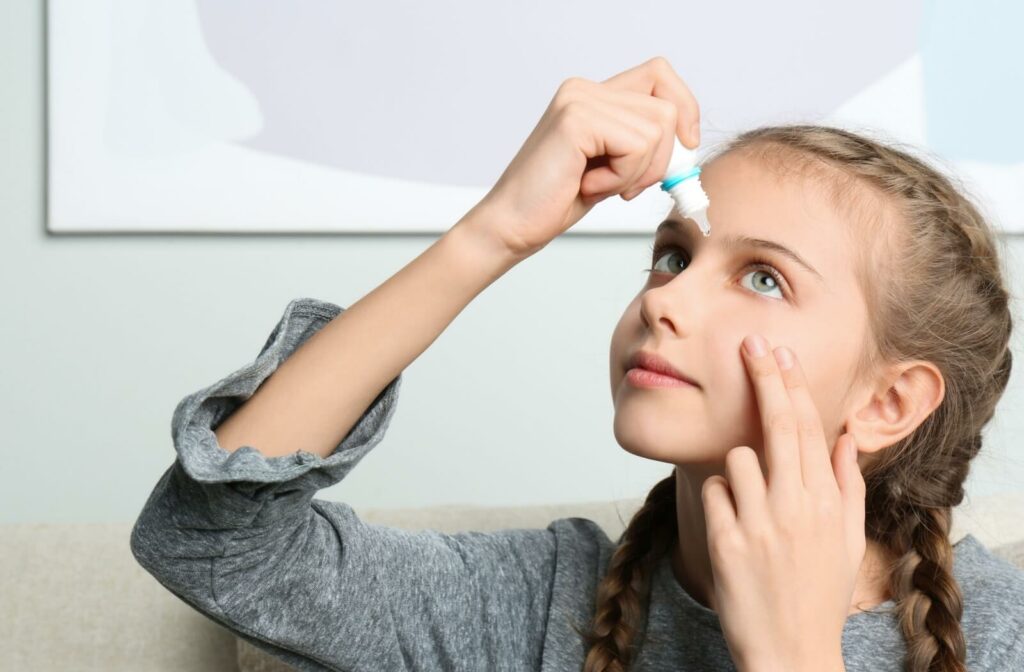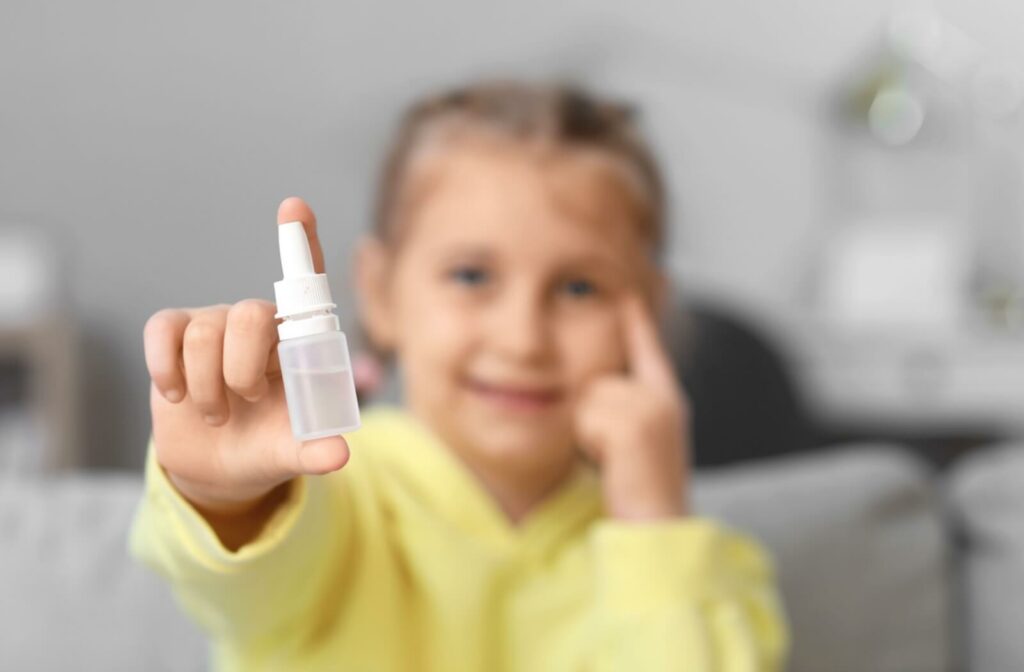Eye drops are a simple, convenient, yet elegant option for treating a range of conditions. They can be used to treat dry eyes, allergies, and even myopia! However, many people find themselves wondering—can children use eye drops, too?
Children can use eye drops safely, so long as an optometrist determines this to be safe. Some eye drops, like atropine drops, can be used to slow the progression of conditions like myopia. However, eye drops should always be treated as medicine, so make sure to store them safely, out of your child’s reach.
Eye Drops for Myopia Management
Myopia, also called nearsightedness, can develop as early as the age of 6 or so, depending on your child’sircumstances. Family history, lifestyle, and habits all play a role in myopia’s development.
As your child grows, myopia tends to worsen as their eyes develop and change. Fortunately, there’s an answer: eye drops for myopia.
Atropine Eye Drops
These eye drops contain a low dose of atropine. When applied to the human eye, atropine temporarily paralyzes the muscles used to focus. This is entirely safe, and sends subtle signs to the eye that it can stop elongating.
While atropine can’t be used to stop myopia, it can be an effective method for slowing the condition’s progression. When used alongside other myopia control methods, atropine drops can be a simple and effective approach to myopia management.
Eye Drops for Allergies
Allergies can be a frustrating problem. They’re the body’s way of reacting to foreign substances like pet dander, dust, and pollen. However, the immune system sometimes overreacts, and when it does it can inflame and irritate sensitive areas like the eyes. This is due to something called “histamines.”
Eye allergies can cause:
- Redness
- Excessive tearing
- Discharge around the eyes
- Mild swelling
- Itching, gritty sensations
These allergy symptoms are extremely common. However, allergic eye drops can help! These contain antihistamines, which slow how much the immune system responds. This then suppresses the immune system’s effects on the eye while helping a child find relief.
Eye Drops for Dry Eyes
The tear film is responsible for protecting the eye and keeping it hydrated. It’s a critical part of your child’s eye health, and it’s made up of 3 layers:
- Mucus, which secures the tear to the eye’s surface
- Water, which flushes away harmful particles and hydrates the eye
- Oils, which protect the outside of the tear film and prevent evaporation
When imbalanced, the tear film can’t protect the eye. Instead, your child may notice irritation, discomfort, and dryness. That’s dry eye, an extremely common eye condition.
Lubricating eye drops, also called artificial tears, can significantly help here. These drops contain anti-inflammatory chemicals designed to help a person find relief. They accomplish this by supplementing and supporting the natural tear film so that it can continue to keep the eyes lubricated.
However, these drops don’t address the underlying cause of dry eye. If you or your child notice persistent dryness, discomfort, and irritation, visit your optometrist to discuss dry eye therapy.
Do Eye Drops Expire?
Eye drops don’t last forever. They all have an expiration date, and using expired drops can pose risks to eye health. This is due to the possible introduction of bacteria and the presence of potentially harmful chemicals that appear as eye drops break down over time.
Preservatives in eye drops help reduce bacterial growth, giving them a longer shelf life. These are typically safe to use until the labeled expiration date if stored correctly. However, once opened, even preservative-based drops should be discarded after 28 days.
Non-preservative eye drops, often packaged in single-use vials, are more sensitive. They lack the preservatives that slow bacteria, which makes them more comfortable to use. However, this also means they must be used immediately. Do not store opened bottles of preservative-free drops, as this can be harmful.

How to Help a Child Use Eye Drops
Helping a child use eye drops can feel challenging. The right approach is key to making the experience more comfortable for everyone involved. It helps to:
- Explain in simple terms: Talk to your child about what you’re doing and why, using words they can understand to ease their worries.
- Wash hands thoroughly: Always clean your hands before applying eye drops to maintain hygiene.
- Position your child comfortably: Have them lie down or tilt their head back while sitting in a stable position.
- Pull down the lower eyelid gently: Using a clean finger, create a small pocket by lightly pulling down the lower lid.
- Apply the drops: Hold the dropper close but don’t touch the eye surface. Squeeze the prescribed number of drops into the pocket.
- Close the eye softly: Ask your child to close their eyes gently and keep them closed for a minute. Avoid rubbing to ensure the drops stay in place.
Patience and practice can turn this into a smooth routine. Remember to always store the drops out of reach—treat them like any other medicine, and store them in a child-safe location.
Eye Care You Can Trust
Children can safely use eye drops, but a professional recommendation is key to making the right choice. And fortunately, our team at Tree City EyeCare is here for you and your family!
We can examine your child’s eyes and recommend the right product to help achieve the results they deserve. Book your appointment with our team today, and let’s help your child keep their eyes comfortable and their vision clear.


